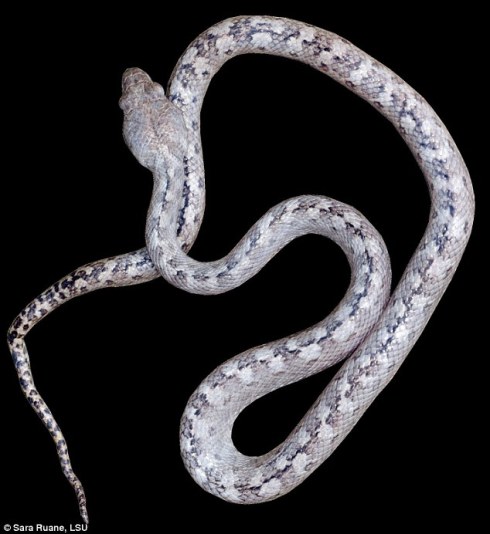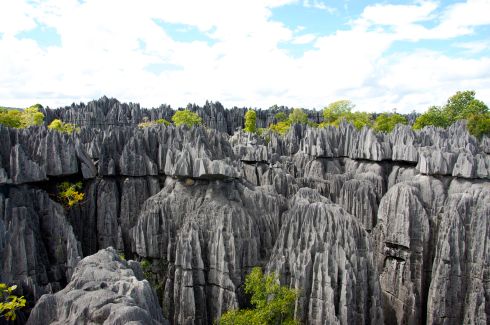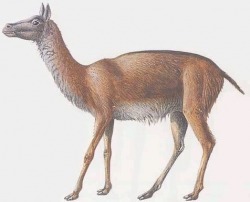You are currently browsing the tag archive for the ‘newly’ tag.

Once again, Ferrebeekeeper heads off to the mysterious micro-continent of Madagascar. This time we are not looking for flags or lemurs, but instead for a newly discovered snake, Madagoscarophis lolo, AKA “the Madagascar ghost snake.” The ghost snake was discovered this year by an international team of researchers from the American Museum of Natural History, the Université de Mahajunga, and LSU. The gray snake with dark gray stipples was discovered at the limestone Tsingy rocks of Ankarana Reserve. This instantly explains why the species was hitherto undiscovered: this snake looks like it would be invisible on the polished wooden floor of a brightly lit library–much less in an impassible wasteland of giant limestone spikes the exact same color that it is. The ghost snake is a species of cat-eyed snakes, little predators with vertical pupils which are active at twilight and at night. The ghost snake seems to be crepuscular…but so far we don’t know too much about it other than that…

Camelids are believed to have originated in North America. From there they spread down into South America (after a land bridge connected the continents) where they are represented by llamas, alpacas, vicuñas, and guanacos. Ancient camels also left North America via land bridge to Asia. The dromedary and Bactrian camels are descended from the creatures which wandered into Beringia and then into the great arid plains of Asia. Yet in their native North America, the camelids have all died out. This strikes me as a great pity because North America’s camels were amazing and diverse!
At least seven genera of camels are known to have flourished across the continent in the era between Eocene and the early Holocene (a 40 million year history). The abstract of Jessica Harrison’s excitingly titled “Giant Camels from the Cenozoic of North America” gives a rough overview of these huge extinct beasts:
Aepycamelus was the first camel to achieve giant size and is the only one not in the subfamily Camelinae. Blancocamelus and Camelops are in the tribe Lamini, and the remaining giant camels Megatylopus, Titanotylopus, Megacamelus, Gigantocamelus, and Camelus are in the tribe Camelini.
That’s a lot of camels–and some of them were pretty crazy (and it only counts the large ones—many smaller genera proliferated across different habitats). Gigantocamelus (as one might imagine) was a behemoth weighing as much as 2,485.6 kg (5,500 lb). Aepycamelus had an elongated neck like that of a giraffe and the top of its head was 3 metres (9.8 ft) from the ground. Earlier, in the Eocene, tiny delicate camels the size of rabbits lived alongside the graceful little dawn horses. This bestiary of exotic camels received a new addition this week when paleontologists working on Ellesmere Island (in Canada’s northernmost territory, Nunavut) discovered the remains of a giant arctic camel that lived 3.5 million years ago. Based on the mummified femurs which were unearthed at the dig, the polar camel was about 30 percent larger than today’s camels. The arctic region of 3.5 million years ago was a different habitat from the icy lichen-strewn wasteland of today. The newly discovered camels probably lived in boreal forests (rather in the manner of contemporary moose) where they were surrounded by ancient horses, deer, bears and even arctic frogs! Testing of collagen in the remains has revealed that the camels are closely related to the Arabian camels of today, so these arctic camels (or camels like them) were among the invaders who left the Americas for Asia.
The bones are a reminder of how different the fauna used to be in North America. When you look out over the empty, empty great plains, remember they are not as they should be. All sorts of camels should be running around. Unfortunately the ones that did not leave for Asia and South America were all killed by the grinding ice ages, the fell hand of man, or by unknown factors.




